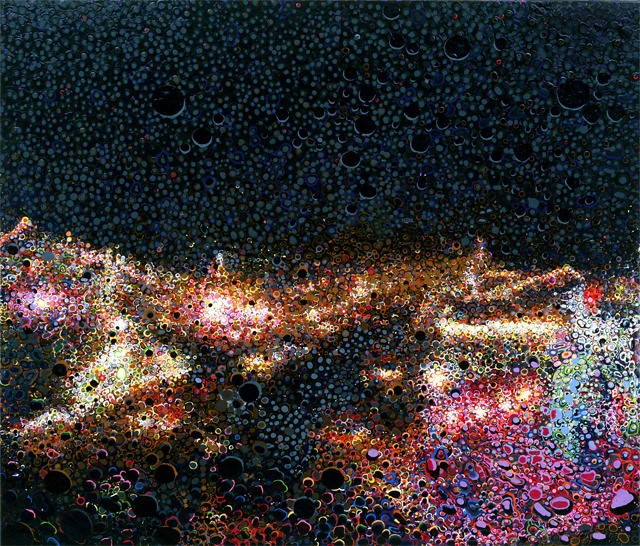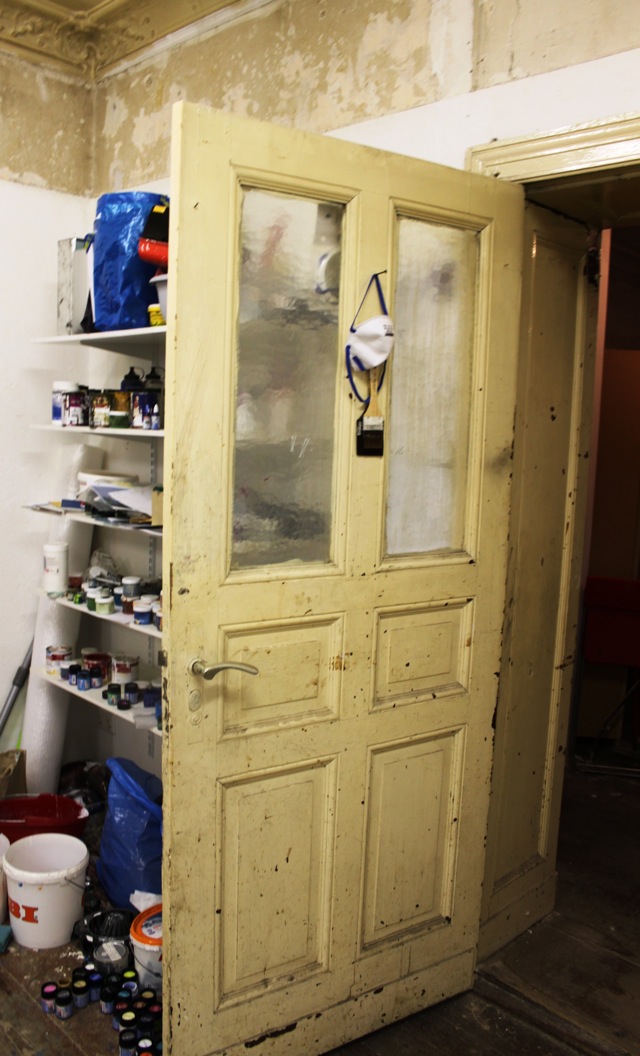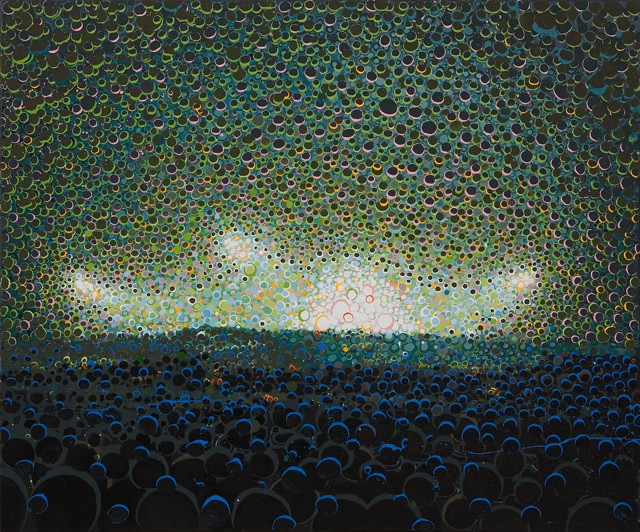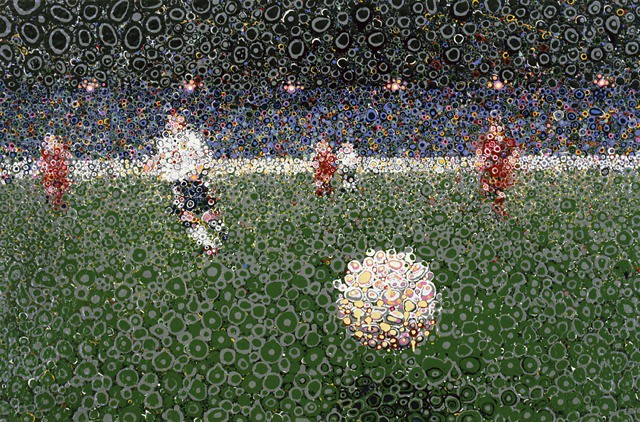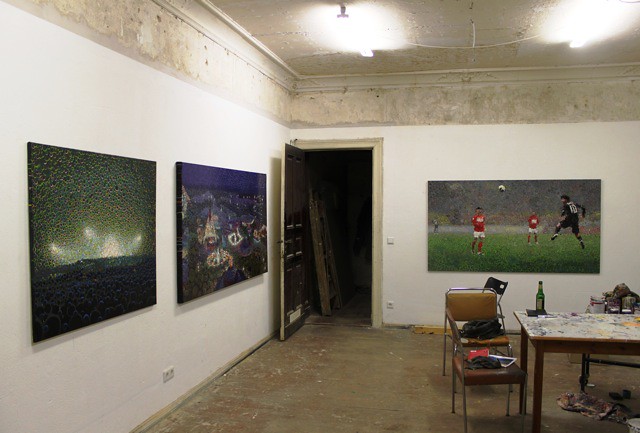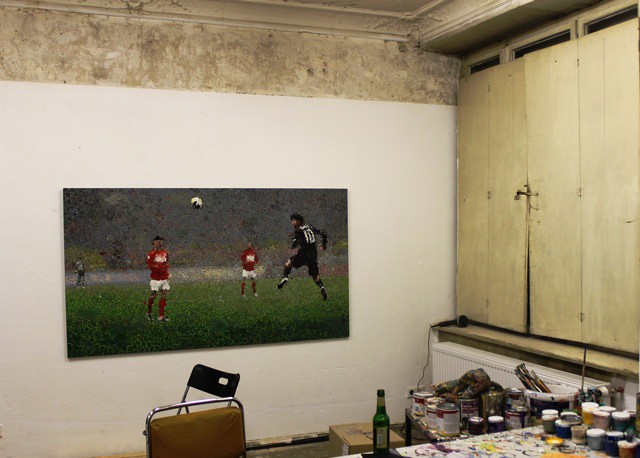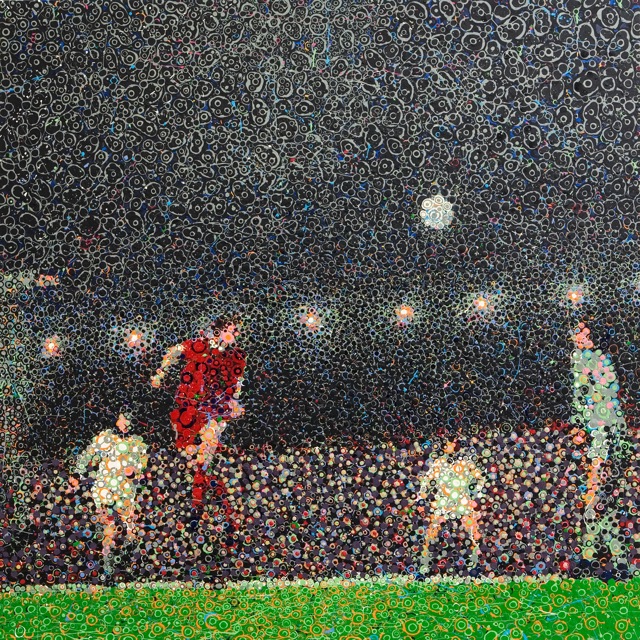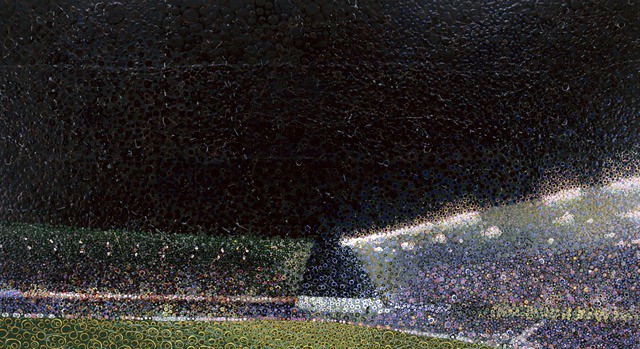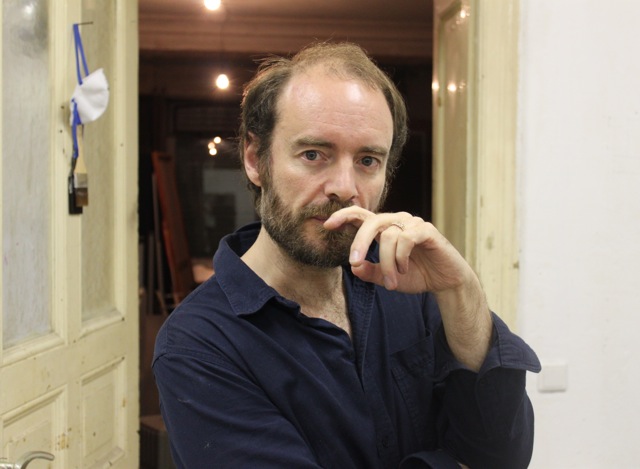
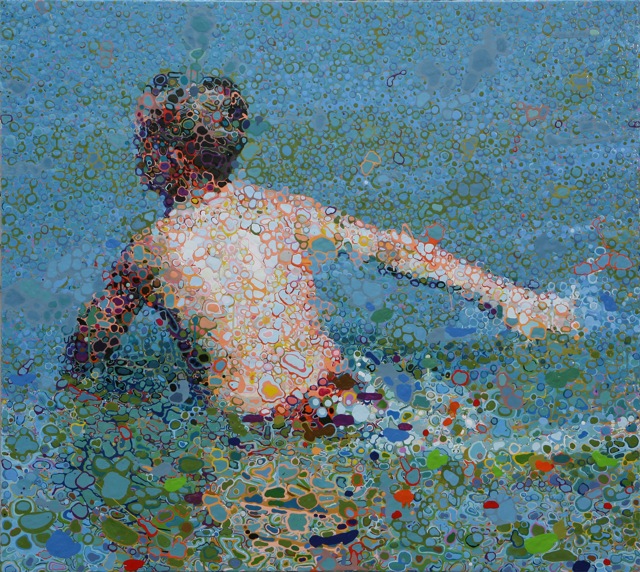
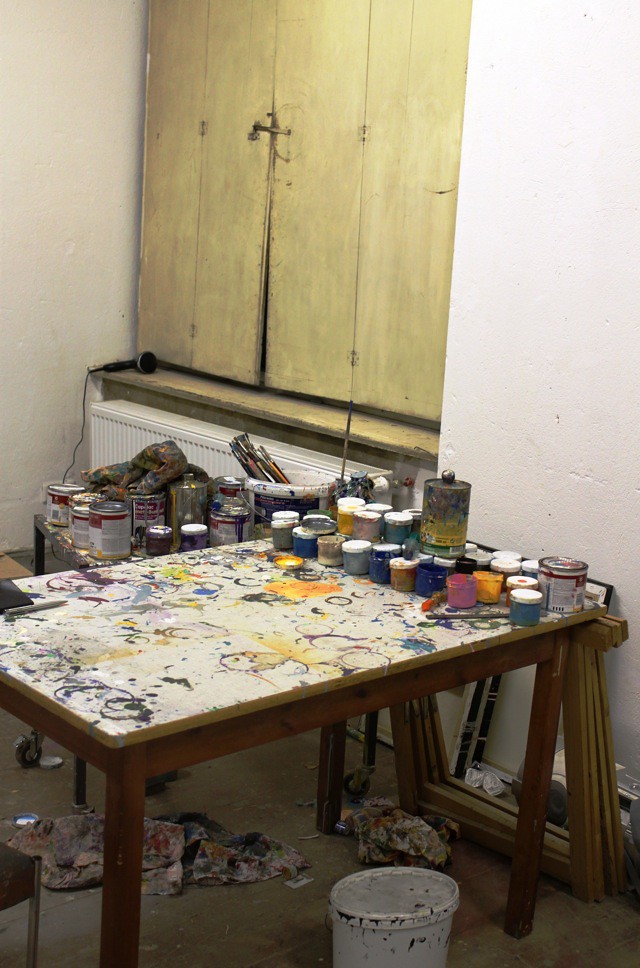
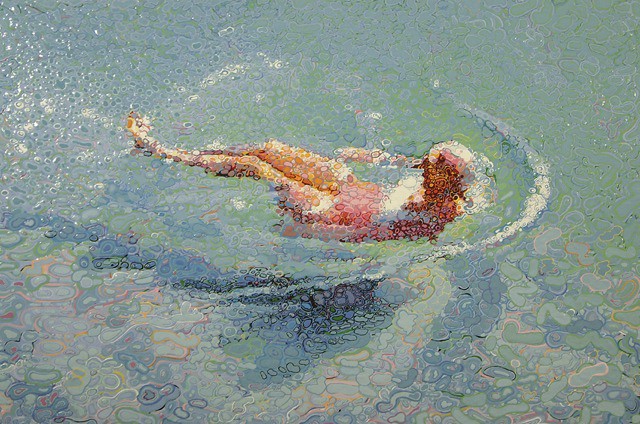

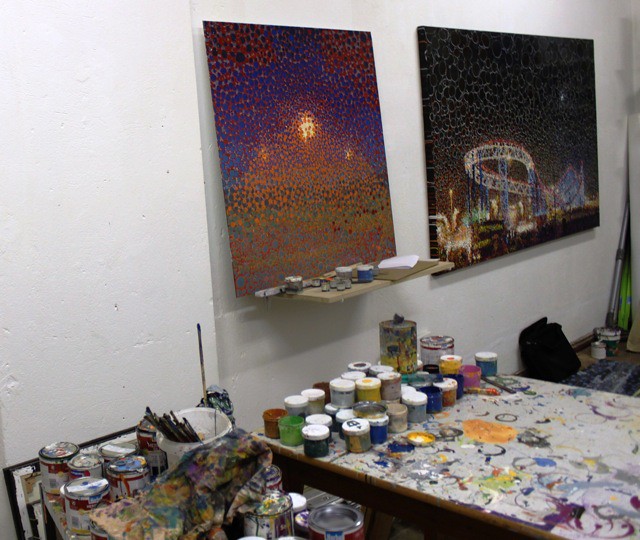
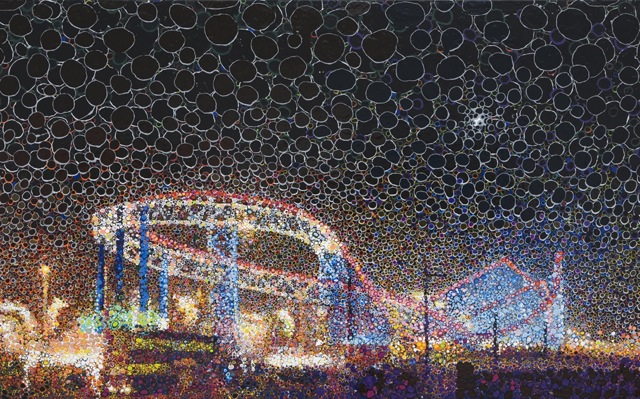
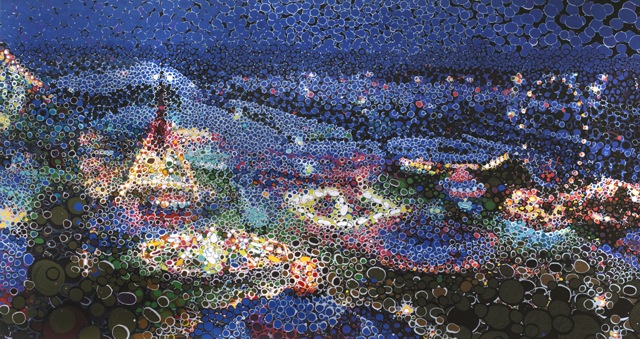
It was a warm summer evening refreshed by a couple of raindrops, when I was going to visit British artist Matthew Davis in his studio in Berlin-Kreuzberg last year. After having spent five years in Freiburg, where the artist worked with the German painter Artur Stoll, he decided to move to Berlin a couple of years ago where he now works in a two-room studio that was occupied by five large-scale paintings at the time I visited him.
For Matthew Davis the creational process is of fundamental importance and comes with a great deal of patience. Every single one of his paintings consists of a thousands drops of artificial resin that are put on the canvas in various sizes and colours. Before he can start on another layer, the former one has to be completely dried out – a process that can take up to a couple of days. Whoever thinks that he could be working on another piece in the meantime is proved wrong. His undivided attention belongs to the one painting that he is working on – regardless whether this might be profitable or not. His pieces ripen over an extensive span of time and are thus both an expression of a constant creational process and of a well thought-wrought transmission of his own emotional sphere onto the viewer.
Having a traditional art school background, Davis found himself quite deflated with the classical and more conservative fine art techniques, taught at art school back in the days. When he came across the artist Peter Doig in the 90s, he was impressed by how someone so aesthetically conventional would become so prominent at that time. Although Doig bases his pieces on photographs, he is no photorealistic painter but rather uses the digital image as a medium of reference. Inspired by that, the use of a photograph in the beginning of an artistic process became an option for Davis to partially break out of the traditions he still valued. This combination of highly skilled technique and realistic input is still of great importance to him nowadays, as he tells me. To Davis, working with photography means a more honest approach, since it enables him to start painting from a source of reality and then gain ownership over the piece in the process of developing his own interpretation of the given.
During the past years the scenery of the soccer arena has become quite a prominent topic in his work. Although Davis is not a great fan of sports per se, he finds himself quite attracted by the scenery of a football match. It is the fantastic light of the football stadium, the huge dimension of the arena and the emotional intensity of the players that call his attention. The idea of belonging to a crowd, of being soluble in becoming one and at the same time of having the feeling to be a single individual in this euphoria, entails the hint of a universal truth to him.
I was already fascinated by his pieces when I saw them online, but looking at them in real life I found myself even more compelled. Something sucks you into his work and lets you rest longer than expected; on the euphoria of the football match, on the cool bathing scenery and on the fluorescent colours of the rollercoaster. Maybe it is because the eyes have to get used to the unusual perspective; one tries to grasp the dots in their individuality and similarly one wants to understand the piece as a whole. It seems as if Davis has managed to transfer the patience of his working process onto the viewer, who is willing to give in to the necessity that the pieces need their own span of time. Matthew Davis thus shows a truly ingenious act of creation and is an artist definitely worth watching.
